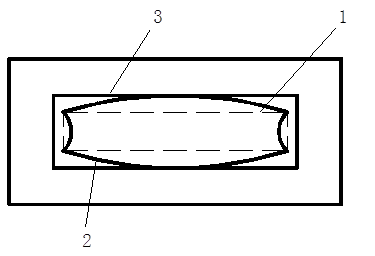 Jan. 21, 2022
Jan. 21, 2022
The wire cutting process is generally the last process in the workpiece processing, if happen the deformation, it is often difficult to make up. Therefore, the corresponding measures should be taken in the processing to formulate a reasonable cutting route to reduce the deformation of the workpiece.
When selecting the cutting route, the following points should be noted
1) Avoid using the process from the end of the workpiece from the outside to the inside, damage the strength of the workpiece, causing deformation.
2) The electrode wire can't be machined along the end face of the workpiece, or the electrode wire can not run stably and the dimension and surface precision can't be guaranteed.
3) The distance between the machining line and the end face should be greater than 5mm to ensure that the structural strength of the workpiece is less affected and no deformation occurs.
4) The machining route should be directed away from the fixture to avoid the deformation of the workpiece due to the release of internal stress during machining.
5) To cut more than two parts on a blank, it should not be cut out in a row, but should start from different piercing hole processing.
6) In general, it is best to place the line segment separated from the holding part of the workpiece at the end of the cutting procedure.
Electrode wire should have good conductivity and corrosion resistance, high tensile strength, the material should be uniform. Common electrode wires are molybdenum wire, tungsten wire, brass wire and core-coated wire. Tungsten wire tensile strength is high, diameter in (0.03 ~ 0.1 mm) range, generally used for all kinds of narrow slit finishing, but the price is expensive. Brass wire is suitable for low-speed processing, good surface roughness and straightness, less chip adhesion, but poor tensile strength, large loss, diameter in the range of 0.1 ~ 0.3 mm, generally used for low-speed one-way wire processing. The molybdenum wire has high tensile strength and is suitable for fast wire-walking processing, so the molybdenum wire is used as electrode wire in most of the fast wire-walking machine tools in our country, the diameter is in the range of 0.08 ~ 0.2 mm.
The diameter of electrode wire should be selected according to the width of the slit, the thickness of the workpiece and the size of the corner. If the small mould with sharp angle and narrow slit should be processed with thin electrode wire and the workpiece with the large thickness or large current should be processed with thick electrode wire. The main types and specifications of electrode wires are as follows,
Molybdenum wire: diameter 0.08 ~ 0.2 mm
Tungsten Wire: 0.03 ~ 0.1 mm in diameter
Brass wire: diameter 0.1 ~ 0.3 mm
Core filament: diameter 0.1 ~ 0.3 mm.
After cutting the first edge in Fig. 1(a), the original main connecting part is stripped off, the remaining material is less connected with the clamping part, and the rigidity of the workpiece is greatly reduced, so it is easy to deform, which affects the machining accuracy. If the cutting line as shown in Fig. 1(b) is processed, the deformation caused by the redistribution of residual stress after the material is cut can be reduced.

Fig. 1 line cutting contrast
In order to reduce the deformation, multiple cutting methods can be used. The second cut in Fig. 2 is a finish cut, which is mainly used to compensate for the deformation caused by the internal stress of the first cut and achieves a satisfactory result.

Fig. 2 determination of wire cutting route
1-a first cutting path; 2-an actual figure after the first cutting; 3- a figure after the second cutting
Xu Feng has rich experience in wire cutting, so if you have any project need such service, feel free to contact us, we'll select the right way for it.